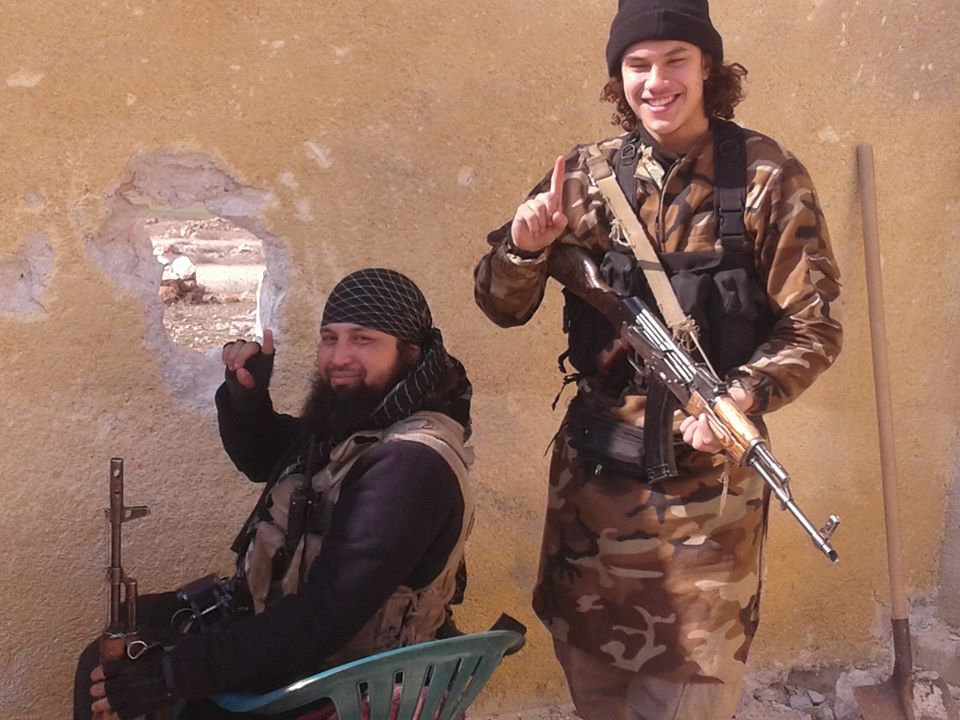MOLENBEEK, Belgium: This once-proud industrial district is better known today as a “jihadi conveyor belt” for having churned out such townsfolk as Abdelhamid Abaaoud, a key alleged conspirator in the November 2015 Paris attacks.
Øyvind Strømmen
In recent years the Brussels neighbourhood of Molenbeek has become notorious, its name popping up over and over in connection with terrorism. British media have dubbed the district a “jihadi conveyor belt” and “Europe’s jihadi central”, while the French newspaper Le Figaro called it a “ghetto of misery”. It has also earned the unfortunate reputation of being a “no-go zone”.
The story, as always, is more complicated.
Like Verviers, Sint-Jans-Molenbeek – one of 19 municipalities in the Brussels-Capital Region – was shaped by the Industrial Revolution. Textile factories, foundries and warehouses were established near the canal, and the once-rural area became a cramped labour-class district, even earning the nickname klein Manchester, or le Manchester petit, little Manchester.
Also like Verviers, Molenbeek is a product of the post-industrial era and – of course – of immigration. The municipality of Molenbeek is considerably more diverse than most media reports let on, but Molenbeek is indeed troubled, with overcrowded housing, high unemployment (particularly for people under 30) and crime.
A considerable part of the population is of Moroccan immigrant background. Brussels itself may be an international capital, but walking into Molenbeek – just a few metro stops from the centre of the capital – is like entering a different part of the world. At the busy Thursday market around the Comte de Flandre metro station, you are more likely to hear Arabic and Berber spoken than French or Dutch. In some ways, it feels more like Morocco than Belgium.
Stigmatisation is part of the story. Molenbeek has little in common visually with the infamous banlieues surrounding Paris. This is no concrete desert with enormous high-rises, but a vibrant inner-city community with busy streets. There is, of course, a darker side. Back in 2006, a young Belgian journalist, Hind Fraihi, published the book Undercover in Klein-Marokko (Undercover in Little Morocco), based on a series of articles published the year before. Fraihi, who has a Moroccan family background, warned against growing radicalisation in the neighbourhood.
Inside Little Morocco, extremism has been brewing for years.
It was here in Molenbeek that Abdelhamid Abaaoud – born in 1987 – grew up as the oldest of six children. His grandfather came to Belgium half a century ago, to work as a miner, and Abaooud’s father owned a clothing store near the market square of Molenbeek. The family lived in nearby Rue de l’Avenir – Future Street, not far from the police station. The family wasn’t rich but was still able to send young Abdelhamid to a prestigious Catholic school, Collège Saint-Pierre d’Uccle, in a green and wealthy residential area in the south of Brussels called Uccle, a popular place for EU bureaucrats to live.
He was admitted as a first-year student in the secondary school, but only stayed one year. Explanations vary: Some say he flunked out. Others that he was dismissed for poor behaviour.
He became part of a group of friends in Molenbeek engaging in petty crimes, and soon got in to trouble with the police. “He was arrested for fighting, drinking, that sort of thing,” his sister told the Belgian Dutch-language daily De Standaard in an interview last year. “Or he refused showing them his identity card.” She told the newspaper that her brother claimed to have been mistreated by the police, and developed a hatred for them. According to his sister, Abaaoud was radicalised while in prison.
In September 2012, he became part of the entourage of Khalid Zerkani, known as Papa Noël – or Santa Claus. Last year, a lower court in Belgium convicted Zerkani of recruiting fighters to the jihadist cause in Syria. Zerkani appears to have been targeting young men with a criminal record, seeking recruits at cafés and on the streets.
His crew allegedly engaged in petty crime – burglaries and pickpocketing – to be able to finance trips to Syria for his acolytes.
Zerkani has been tied to at least 20 people having left Belgium for Syria and Iraq. In addition, his name has come up in connection with recruits to the al-Qaeda-affiliated group al-Shabaab, active in Somalia.
In March 2013, Abaaoud left for Syria too – travelling across Egypt together with a group of other Belgians. Details about this trip are scarce, but he is believed to have returned in September. In January 2014, he left for Syria again, flying from the German city of Cologne to Istanbul. This time, he brought his younger brother Younes, only 13 at the time.
Most of the recruits in Zerkani’s network initially joined a hard-line militia known as Katibat al-Muhajireen, comprised mostly of Chechen and Russian fighters. In early 2014, Katibat al-Muhajireen joined the self-declared Islamic State (later, the group has changed affiliations).
Both brothers have been featured in propaganda material released by ISIS. In one video, Abaaoud is seen speaking in hushed tones; although the background is rather neutral, he appears to be near the ISIS front line. The most notorious video involving Abaaoud, however, is one acquired by the French magazine Paris Match in March 2014. In it he is seen towing mutilated bodies behind a pickup truck. The recording – made on Abaaoud’s mobile phone – shows him grinning and joking.
Shortly after the video was released by Paris Match, Abaaoud wrote an angry comment on Facebook. “Those videos were stolen by an apostate,” he stated, adding: “You should know that there were no civilians in it. All the dead were apostate rebels, encouraged to fight us by disbelievers in the whole world. They were killed by the anger of Allah.”
The video is believed to connect Abaaoud to a massacre in the town of Haritan, to the north of Aleppo.
It is believed that Abaaoud eventually became part of an Islamic State brigade known as Katibat al-Battar, a group initially founded by Libyan fighters. In October 2014, his name was mentioned on a list of fallen al-Battar members.
Abaaoud had not been killed. Instead, he returned to Europe and played a central role in a terror plot that Belgian police were able to avert by raiding an apartment in Verviers on 15. January 2015 (see HSI story “A police raid in Belgium”). The details of his involvement are somewhat murky. While Belgian police originally believed that Abaaoud was directing the Verviers cell from Greece, he himself implied that he had been to Belgium in an interview in the Islamic State’s internet magazine Dabiq. The four-page article included a picture of Abaaoud alongside the two men killed in the police raid, Soufiane Amghar and Khalid Ben Larbi.
“Allah blinded their vision and I was able to leave and come to Sham despite being chased after by so many intelligence agencies. All this proves that a Muslim should not fear the bloated image of the crusader intelligence,” Abaaoud was quoted as saying. “My name and picture were all over the news, yet I was able to stay in their homeland, plan operations against them, and leave safely when doing so became necessary.”
Months later Abaaoud was again to return to Europe, this time to play a key role in the Paris attacks. He is believed to have coordinated the attacks by phone on the night of 13 November. He is also believed to have been involved in several other terror plots, including the foiled attack on a Thalys train going from Amsterdam to Paris on 21 August 2015.
On 18 November 2015, at 4:20 a.m., heavily armed French police raided an apartment building in the Parisian suburb of Saint-Denis, less than two kilometres from Stade de France, the French national stadium that was one of the targets of the terrorist attacks five days earlier. The police had received a tip from Morocco, confirming that Abaaoud was indeed in France, and they had been able to shadow a suspected associate, Abaaoud’s cousin Hasna Aït Boulahcen, to the building, where they saw her enter with Abaaoud.
The police were met with heavy resistance, resulting in a four-hour siege followed by a gun battle that lasted almost an hour. In the end, two people inside the apartment were killed, one of them by setting off a suicide bomb. Five police were injured, a police dog was killed and a number of arrests were made.
It took more than 24 hours before French authorities confirmed that one of the two people killed was Abdelhamid Abaaoud. It is believed that he was preparing for another attack, targeting a La Défense shopping district.
The story doesn’t end there. The suicide bomber in the Saint Denis apartment was identified as as Chakib Akrouh, another member of Khalid Zerkani’s entourage. A third member, Gelel Attar, has been arrested in Morocco, also in connection with the Paris’ attacks.
Younes Abaaoud – Abdelhamid’s teenage brother – probably remains in Syria. In a Facebook post reported by the Belgian daily Het Laatste Nieuws, another Belgian fighter in the country posted a dated picture of the young boy, writing: “Abu Omar al-Soussi may have been martyred. But his brother is alive. And we are coming to the worshippers of the cross.”
Abdelhamid Abaaoud – alias Abu Omar al-Soussi or Abu Omar al-Belgiki – has been described as the mastermind behind the Paris attacks by a number of media. While he doubtlessly played a central role in the attacks, “mastermind” is likely an exaggeration. Abaaoud has functioned more like a go-between, a recruiter and – importantly – a poster boy. In the background, other names are mentioned as possible masterminds.
One is that of a Réunion island-born Frenchman: Fabien Clain.
This is part 2 in a series of articles on the Belgian and French jihadist scenes, and the terror attack in Paris. Read Part 1: A police raid in Belgium.





 Print Friendly
Print Friendly







[…] This is part 1 in a series of articles on the Belgian and French jihadist scenes, and the terror attack in Paris. Read Part 2: The Life and Death of a Terrorist […]